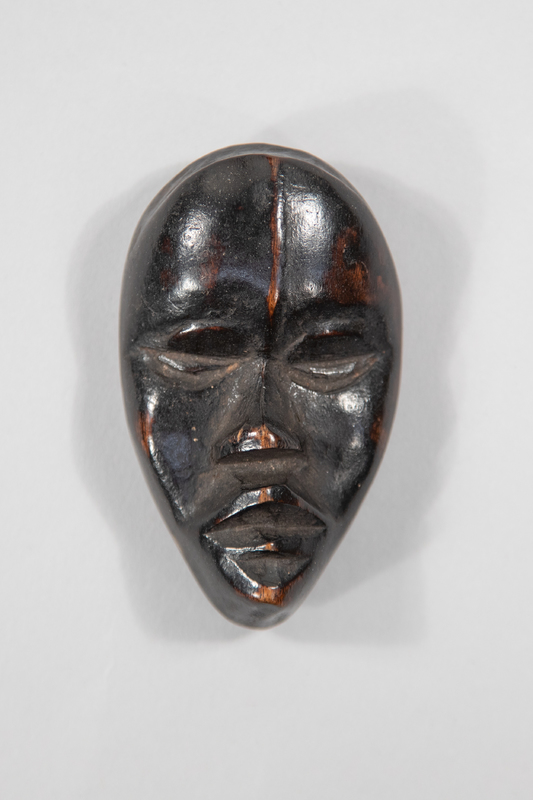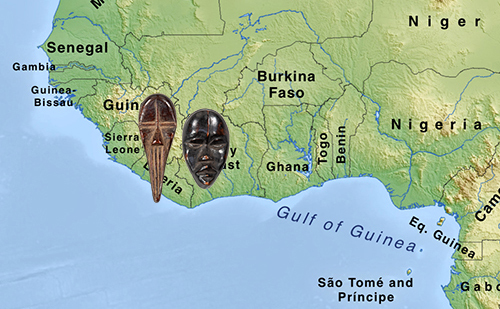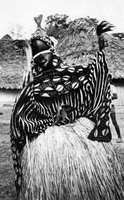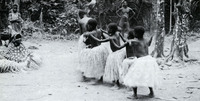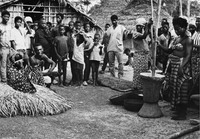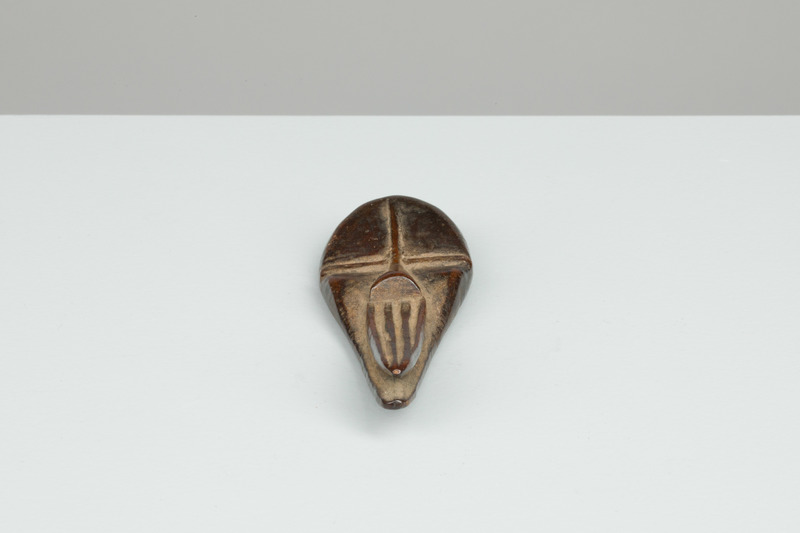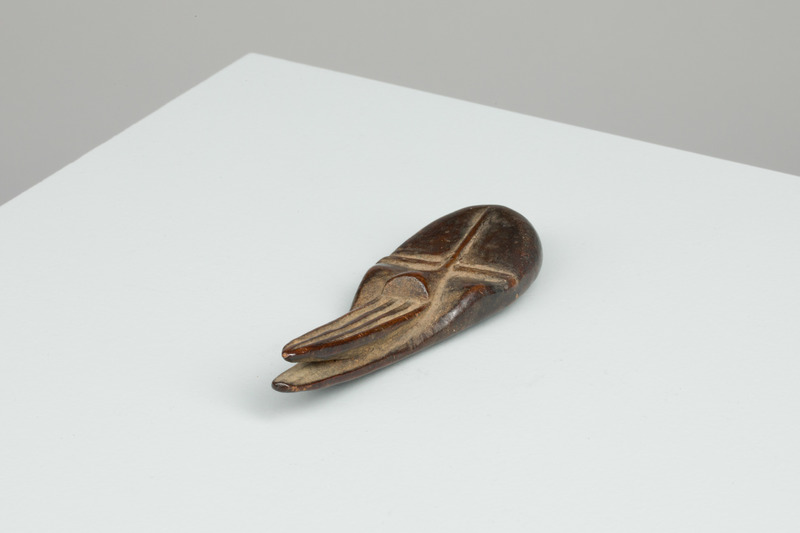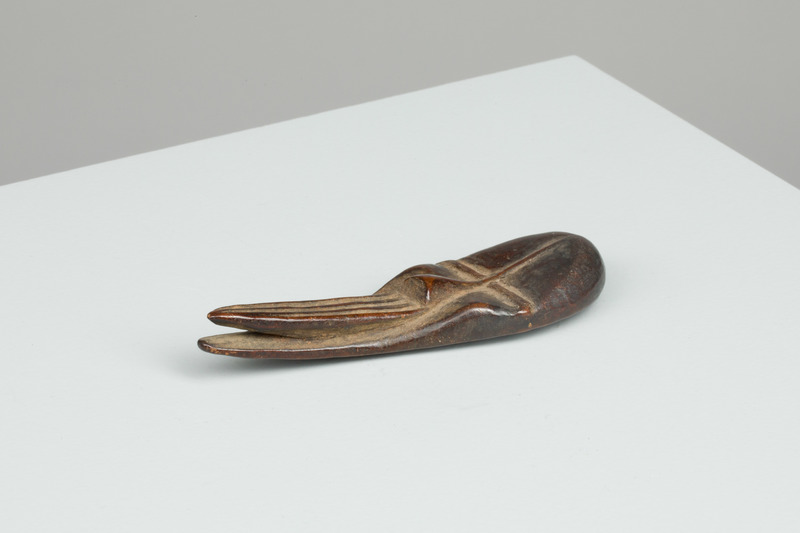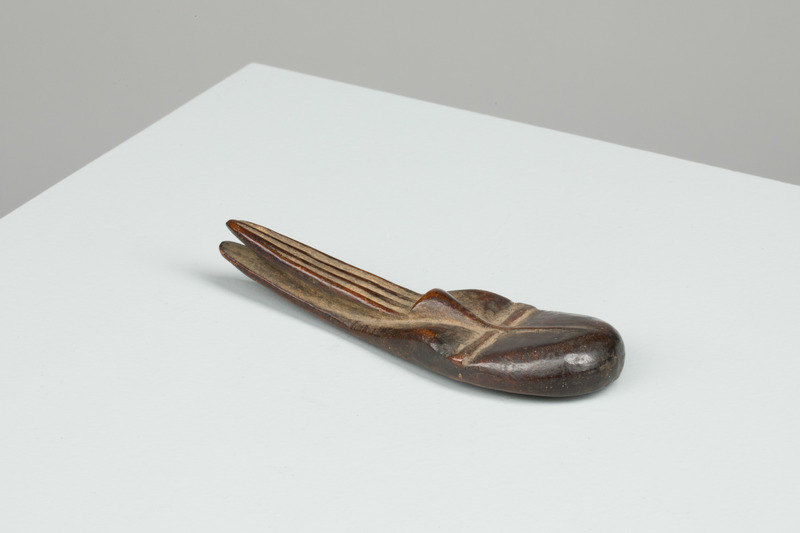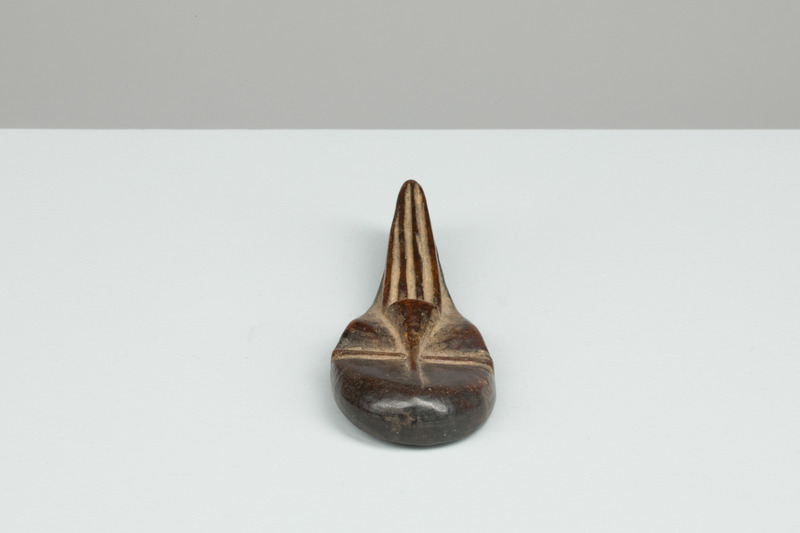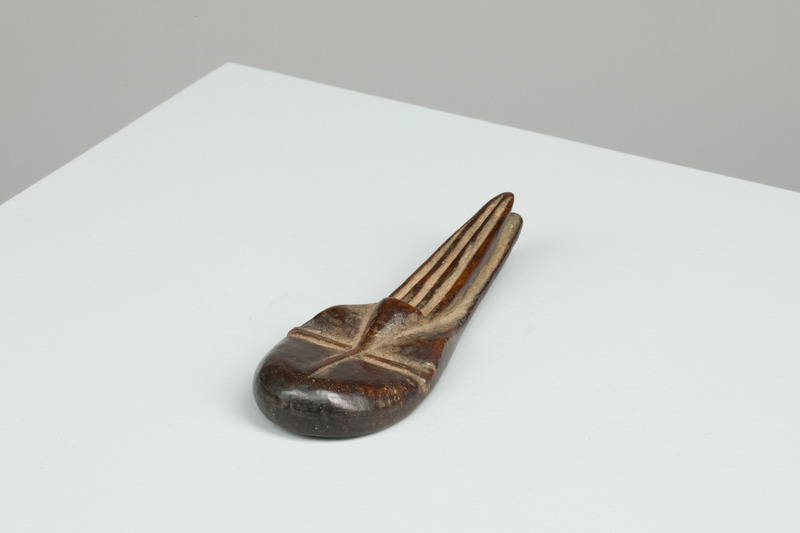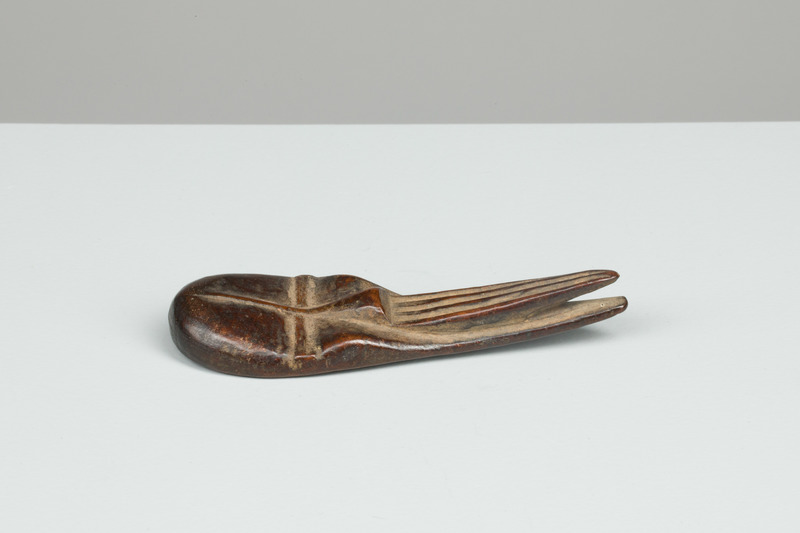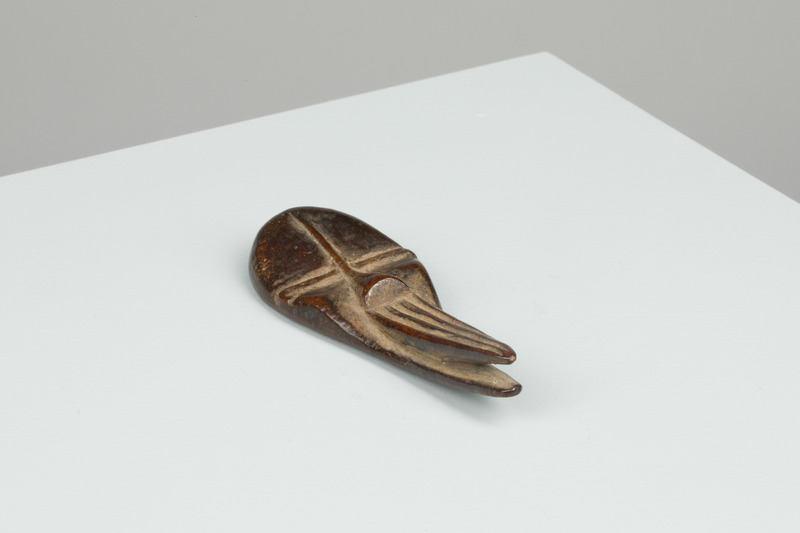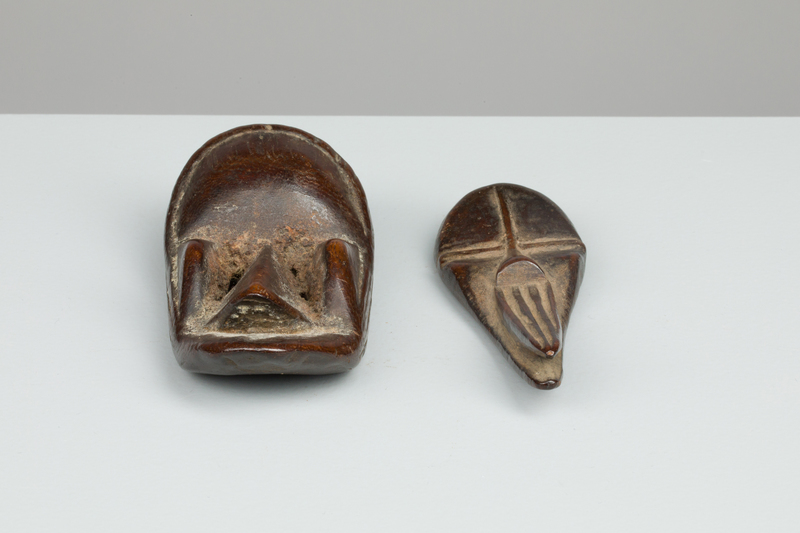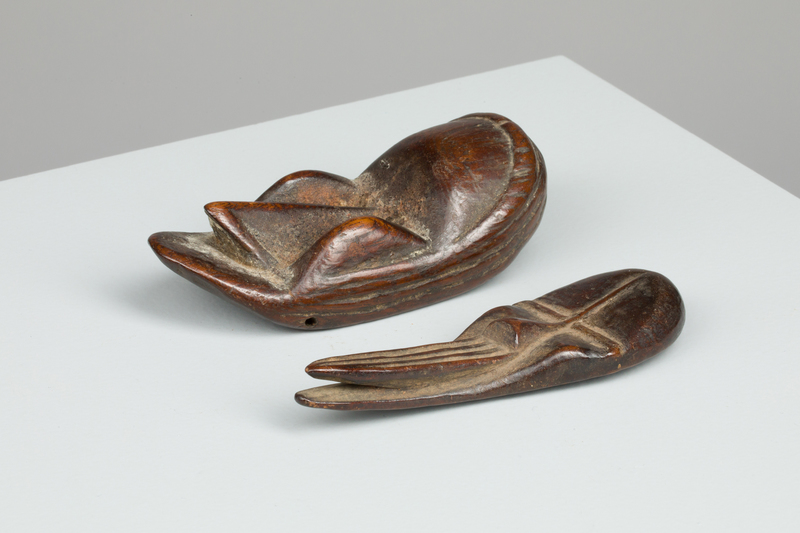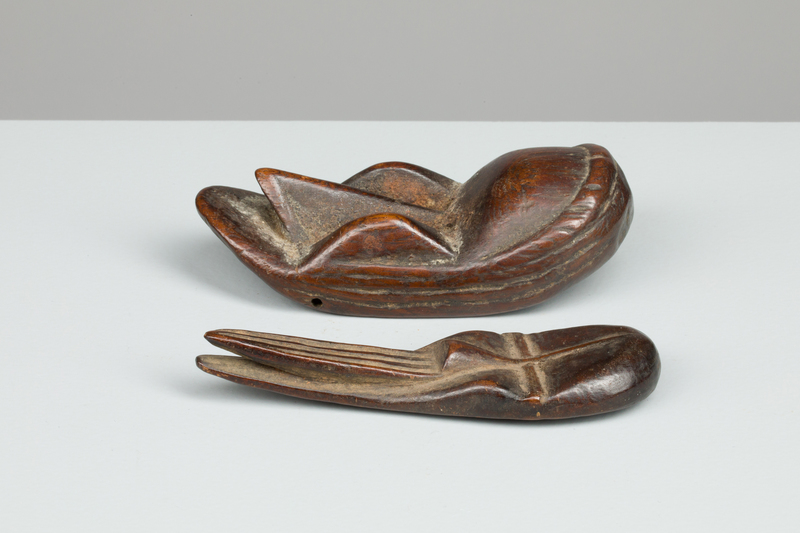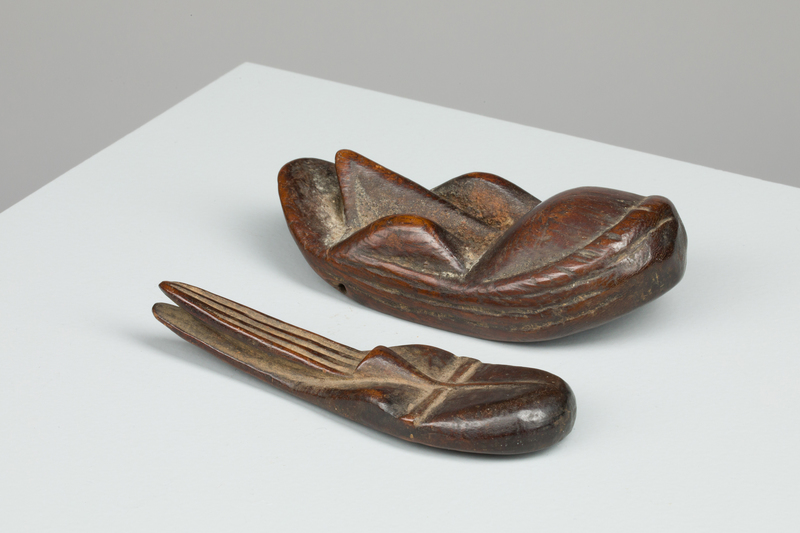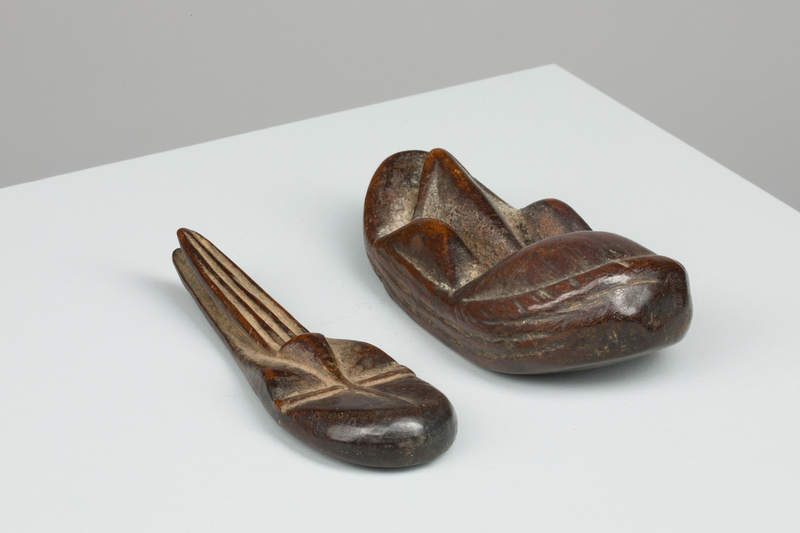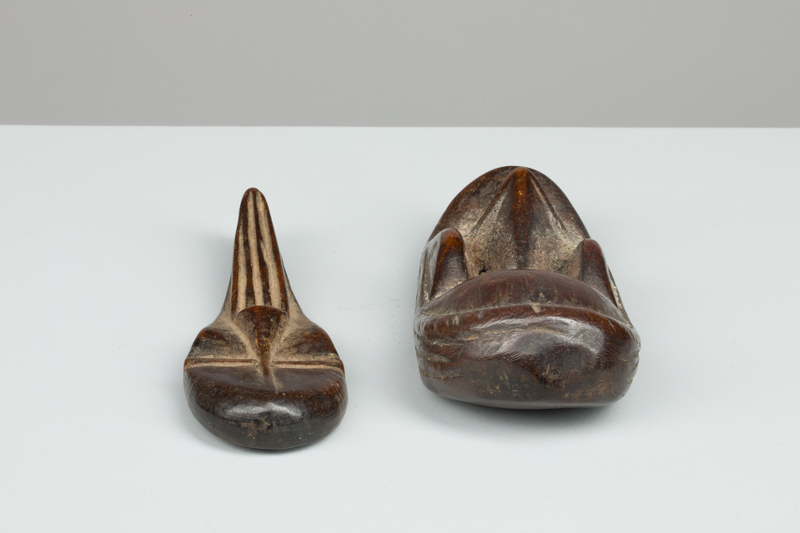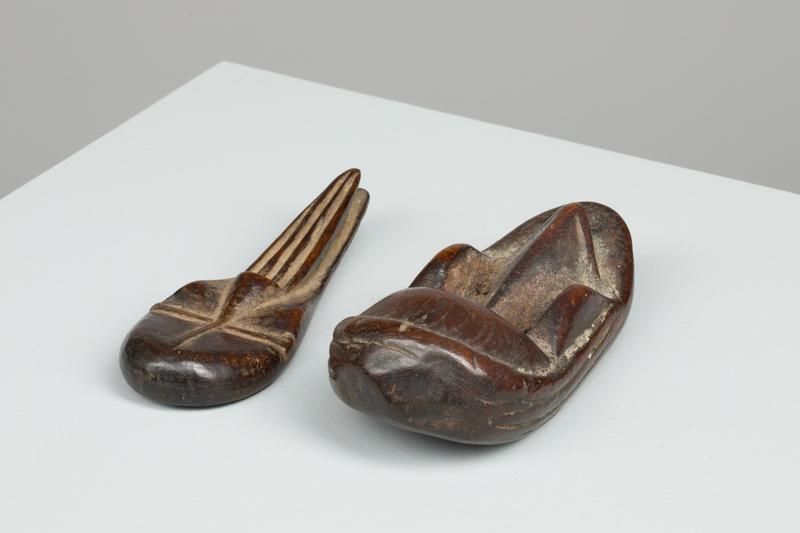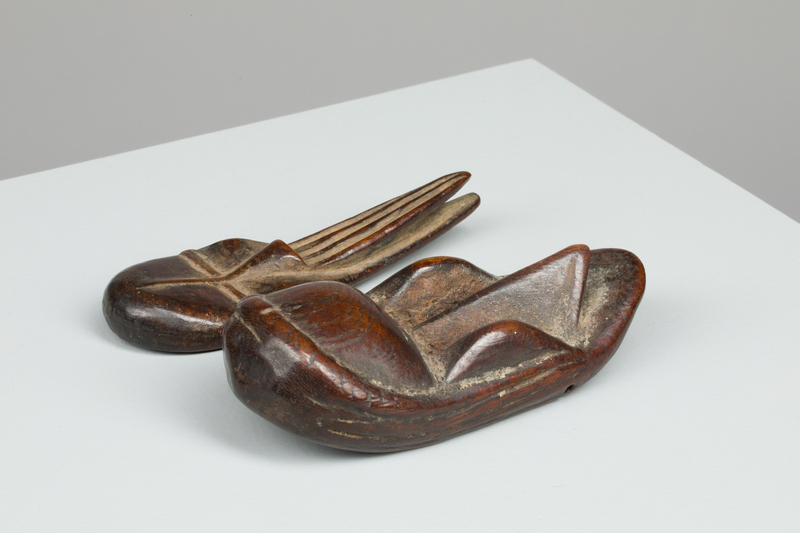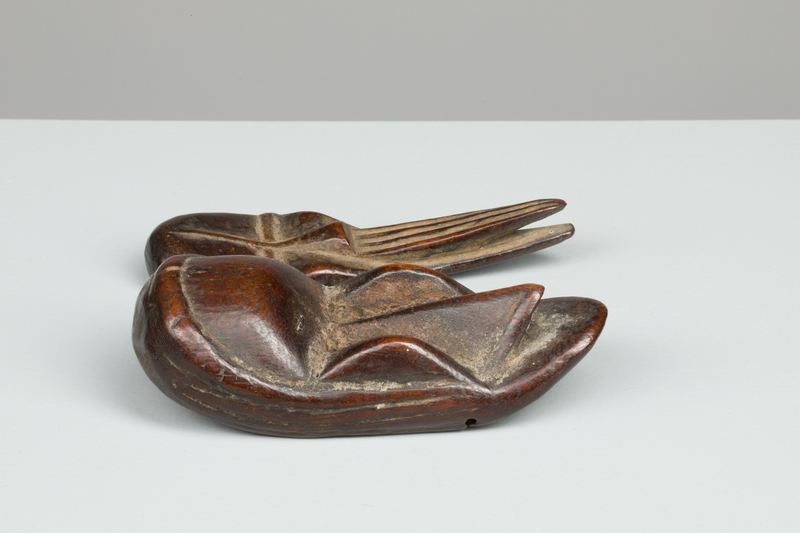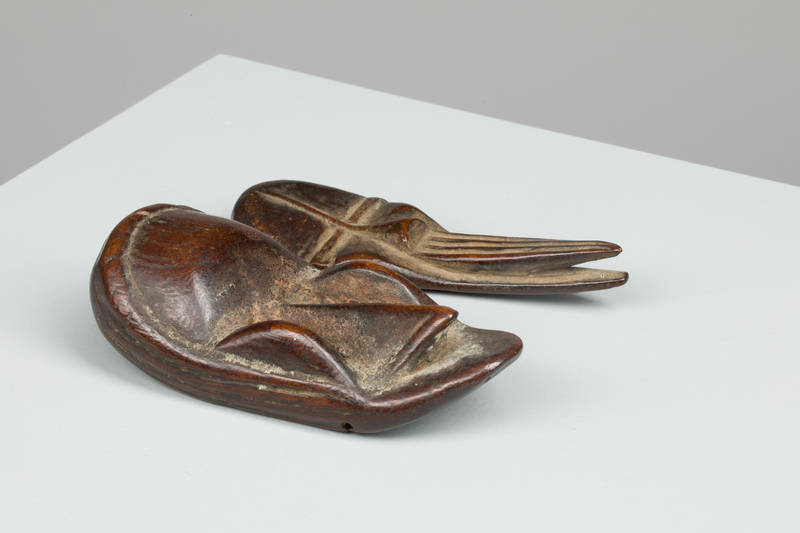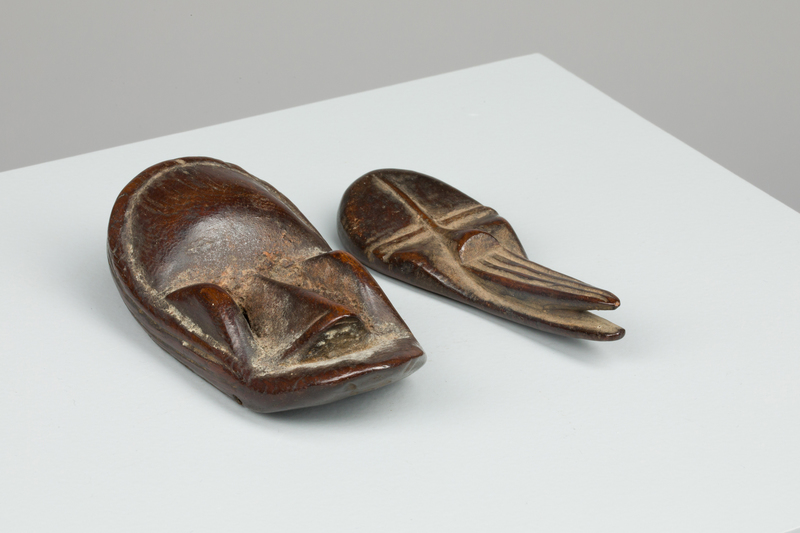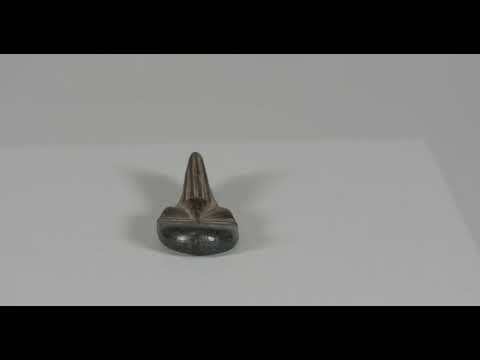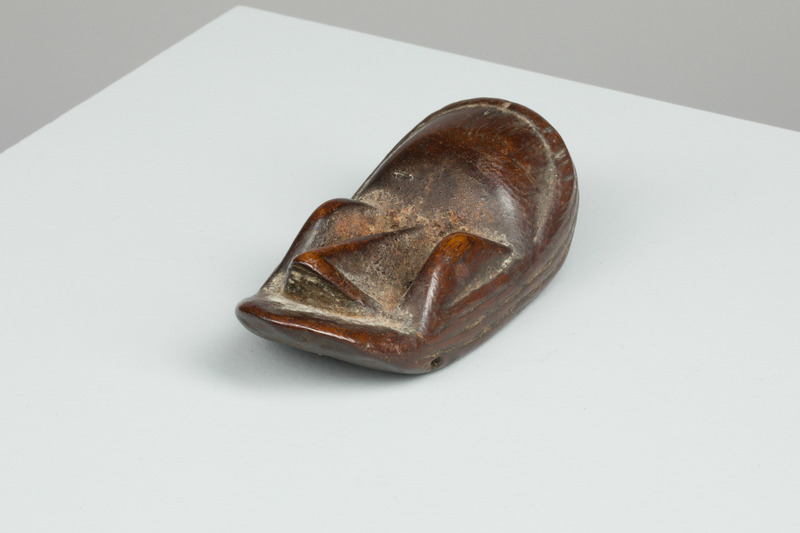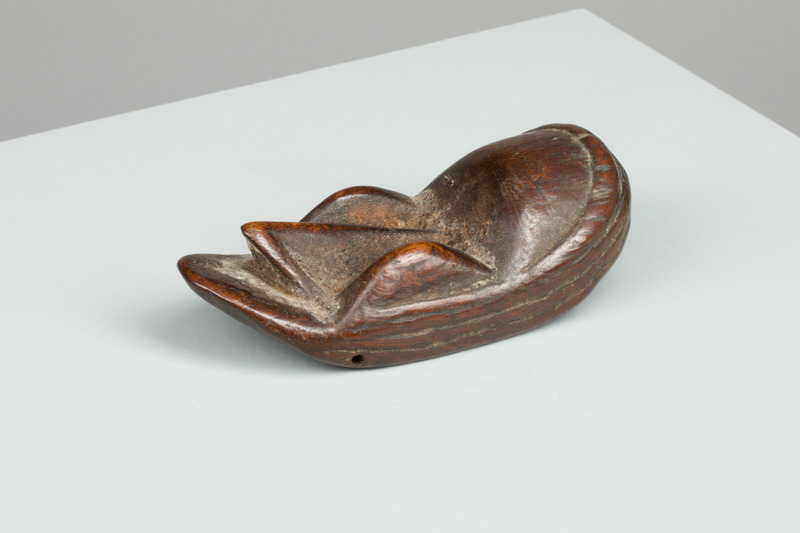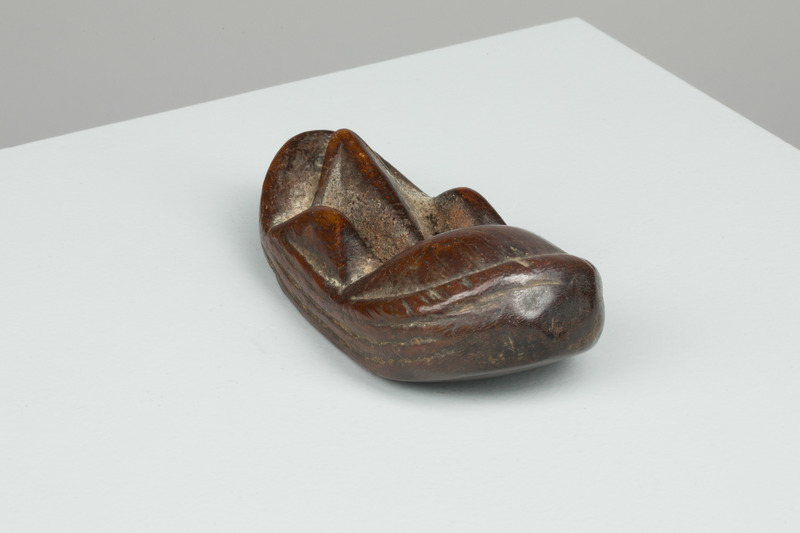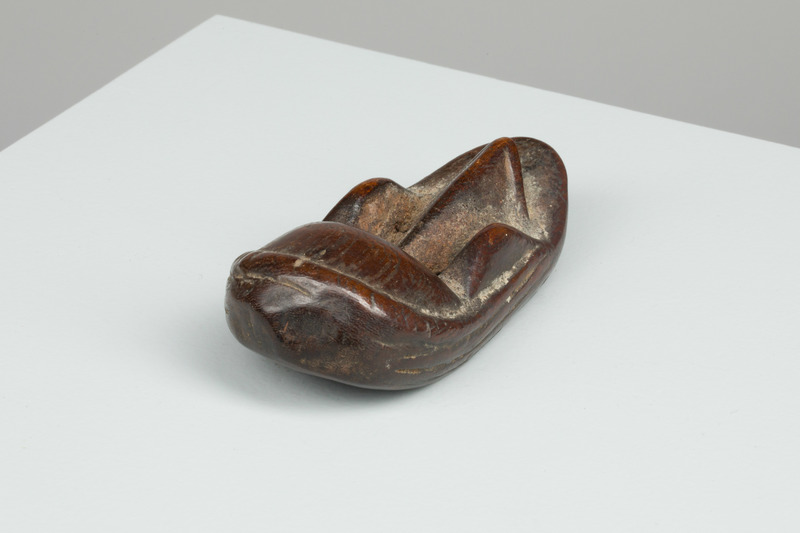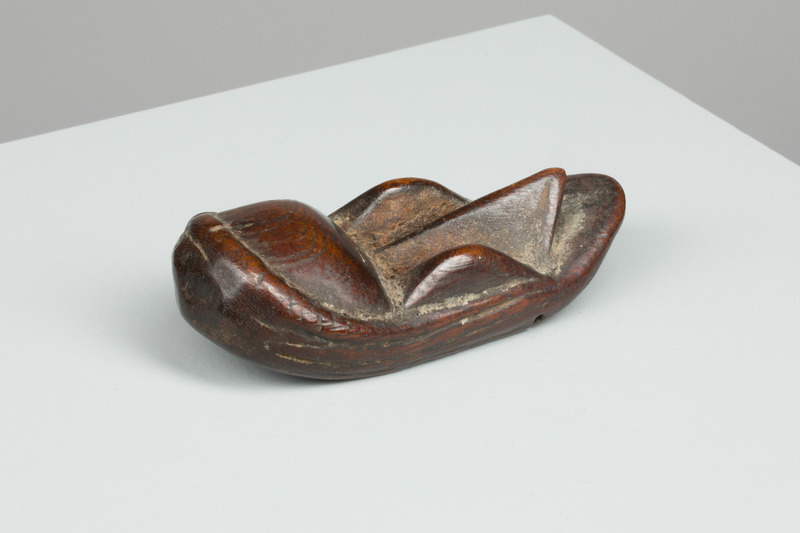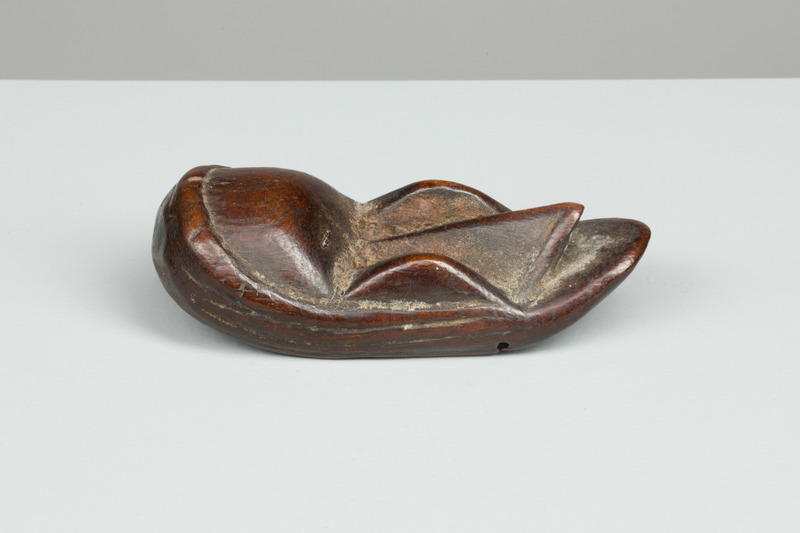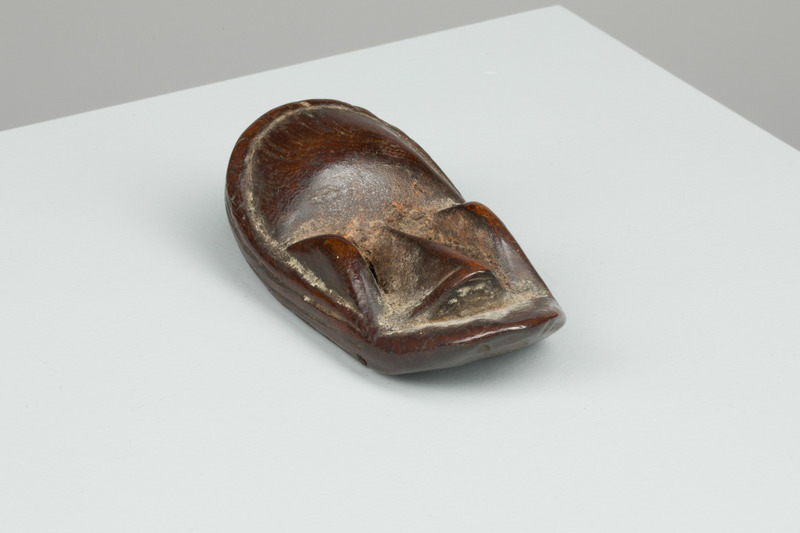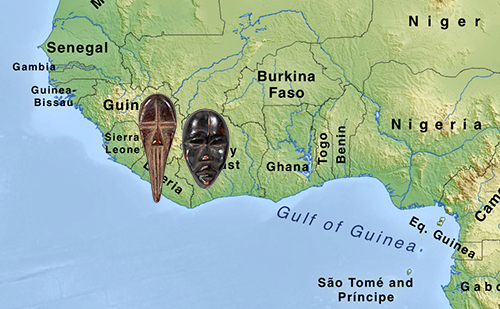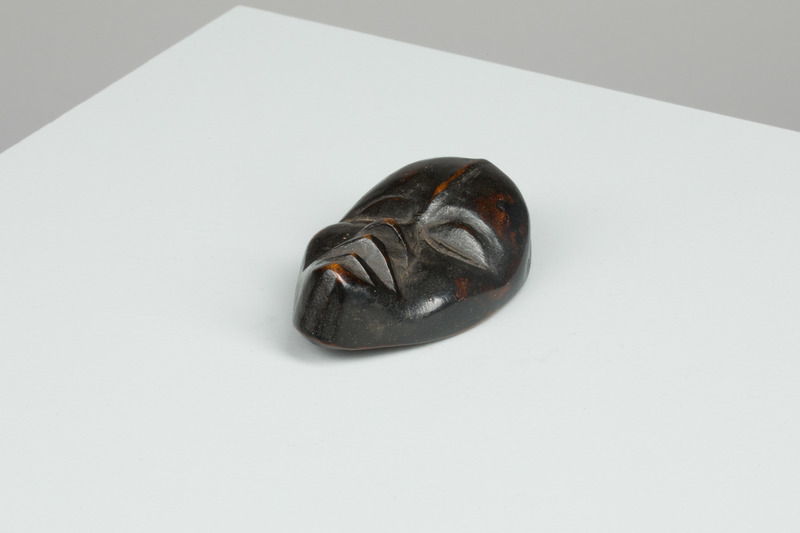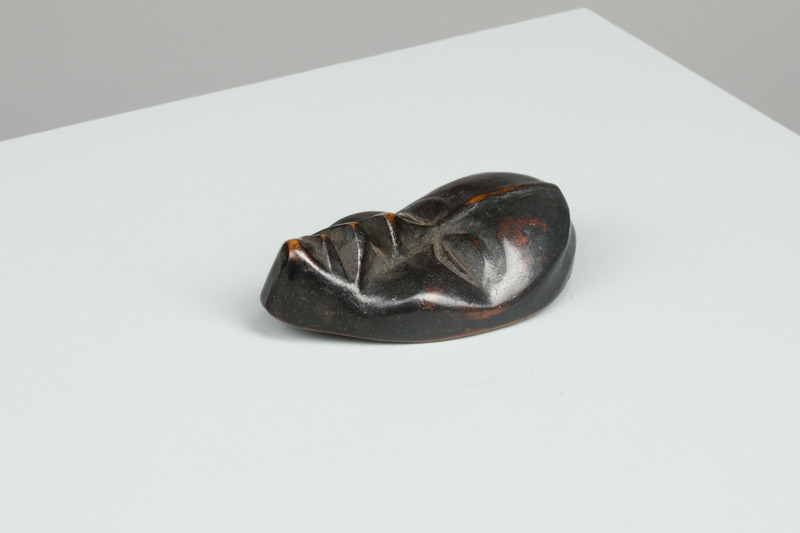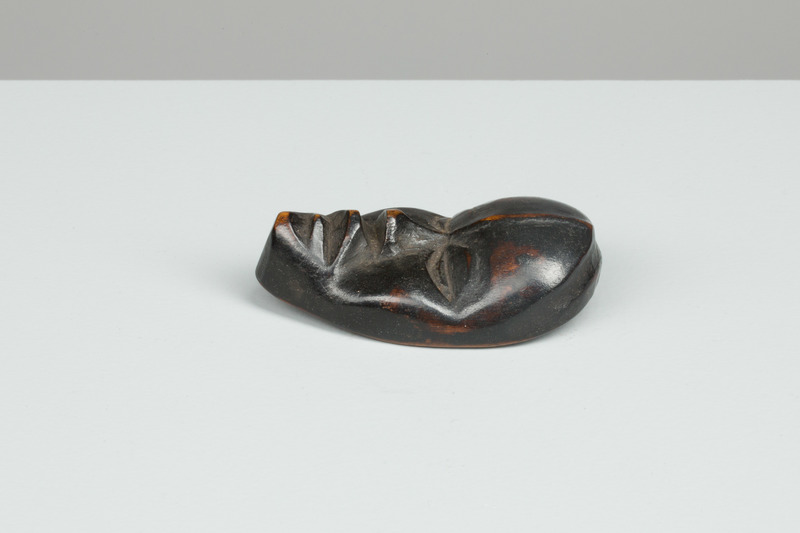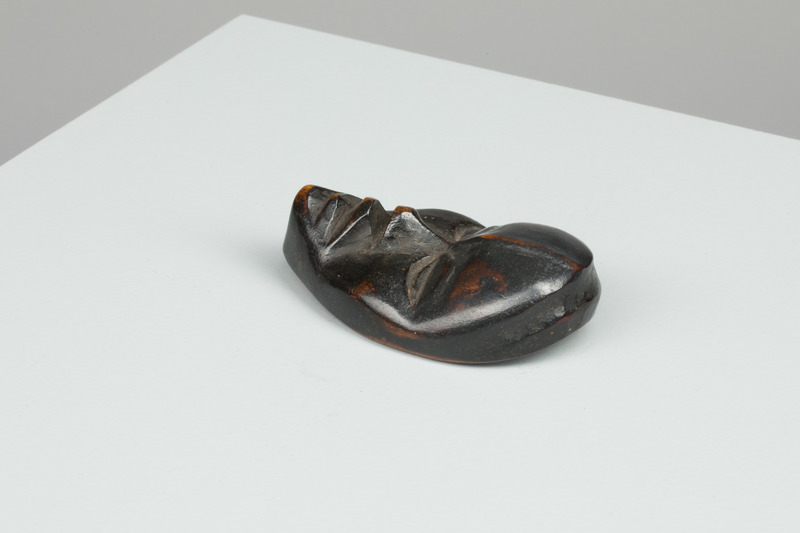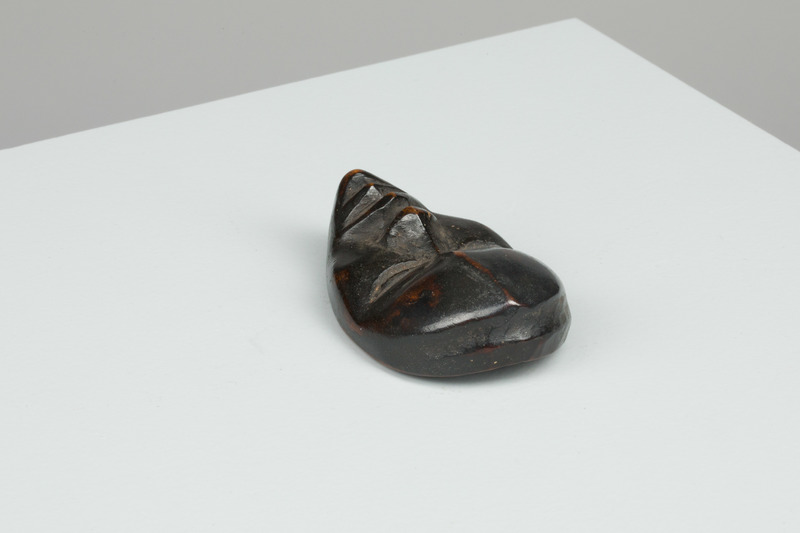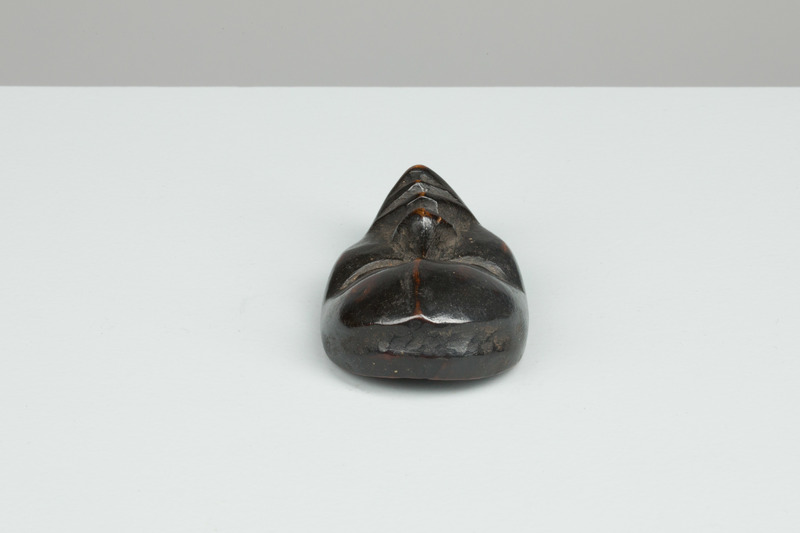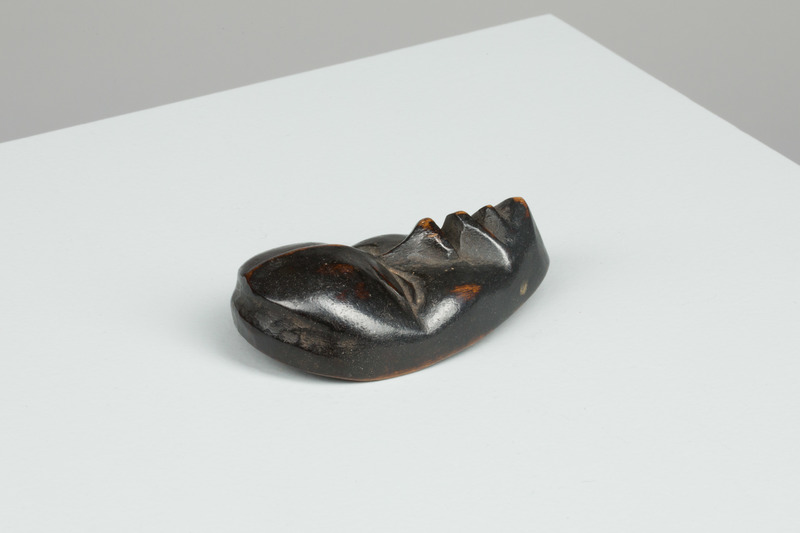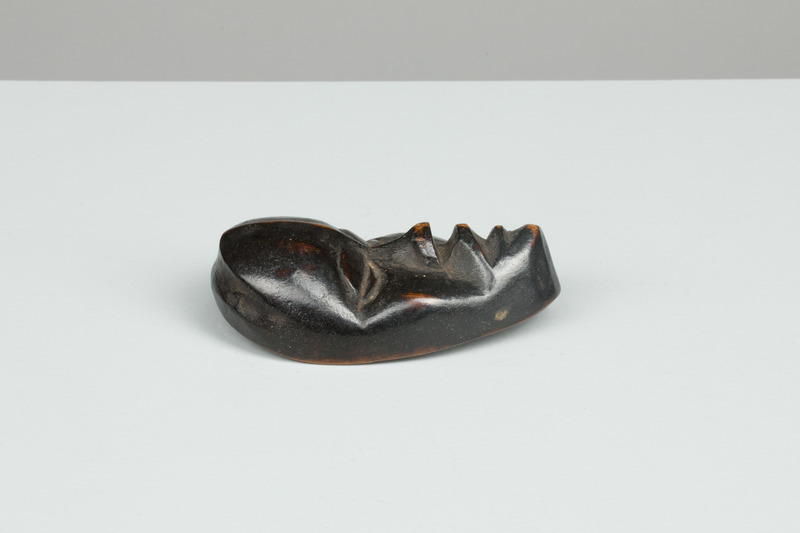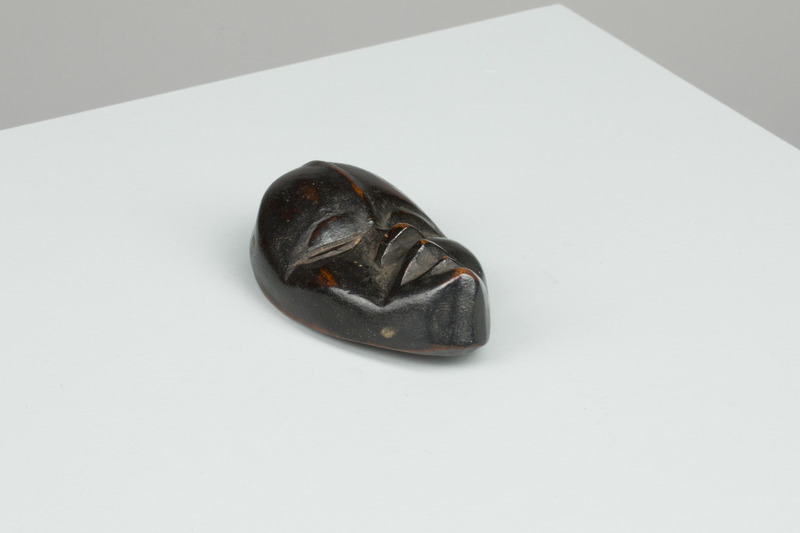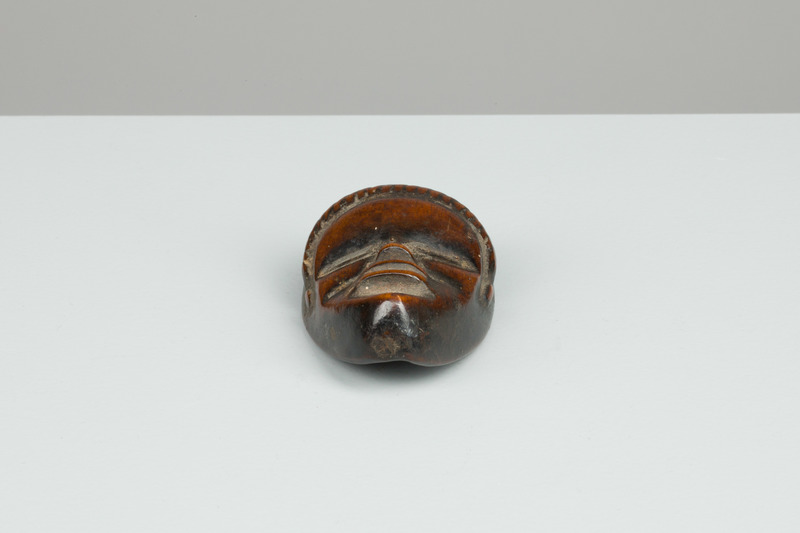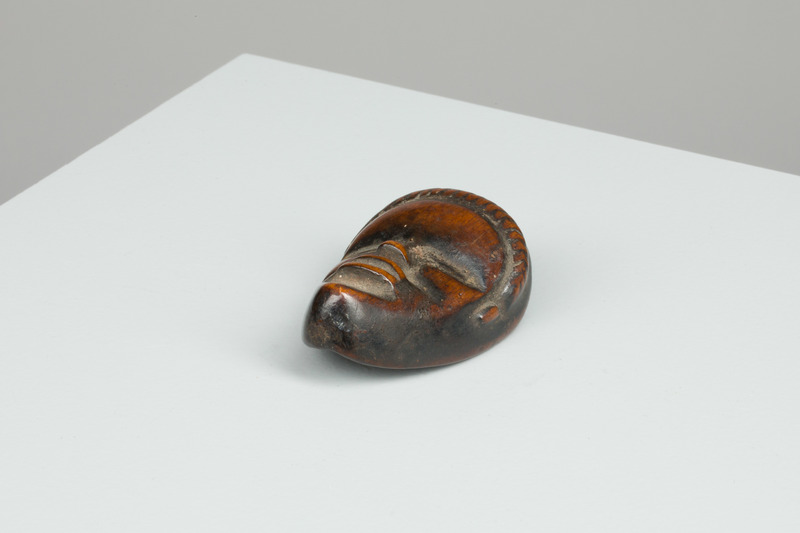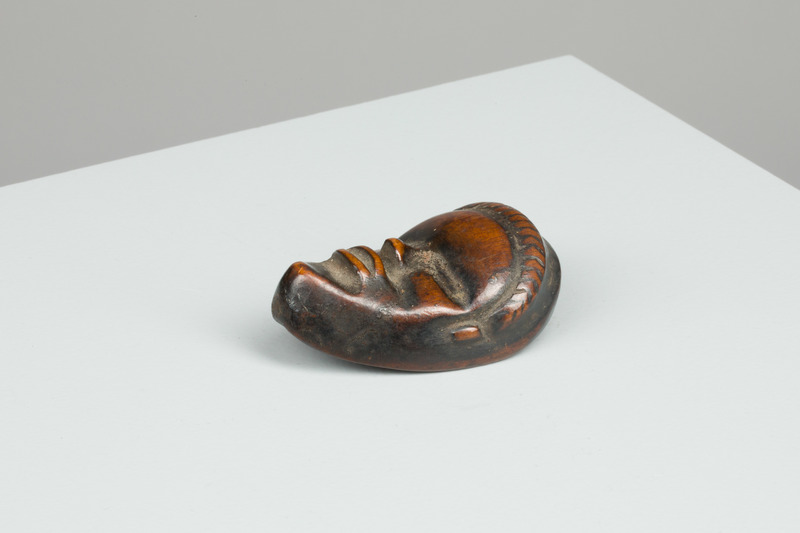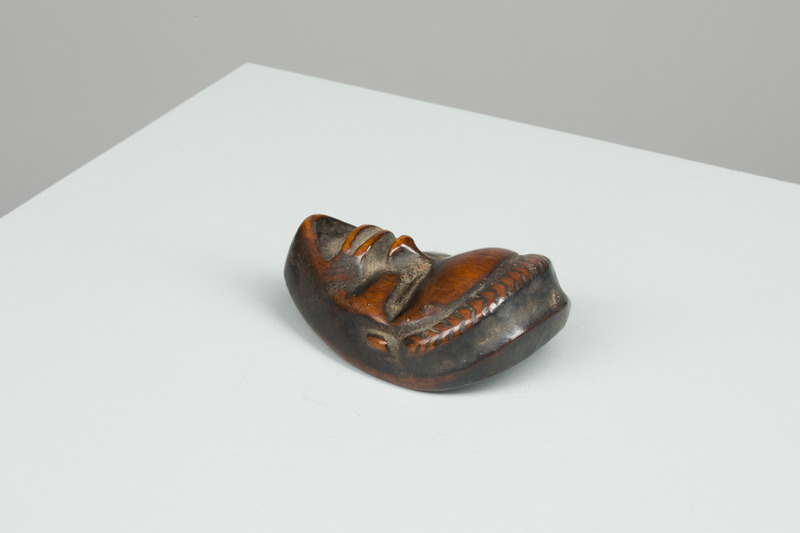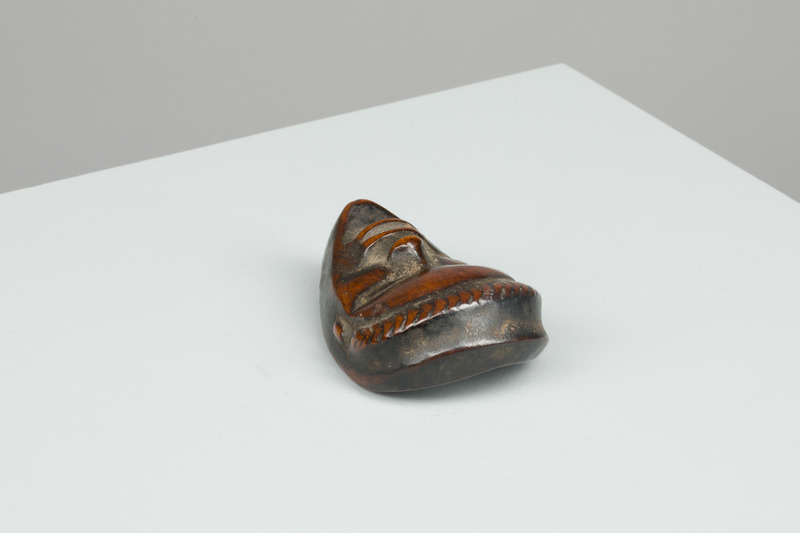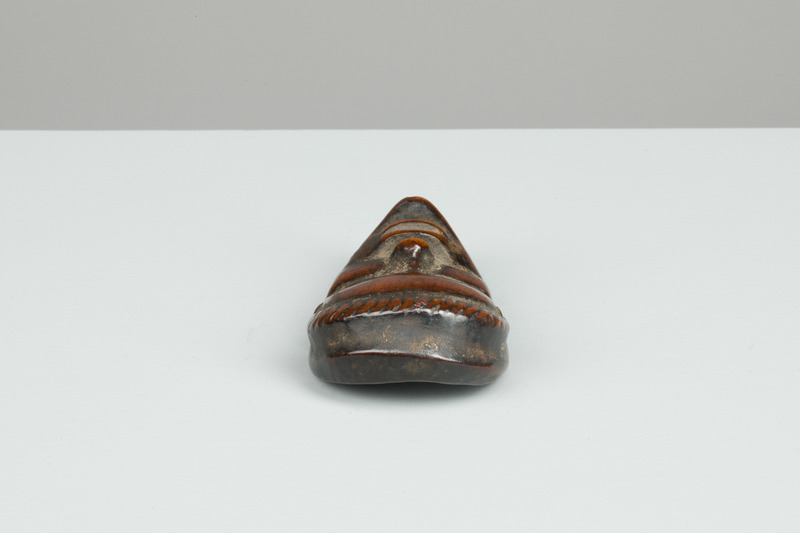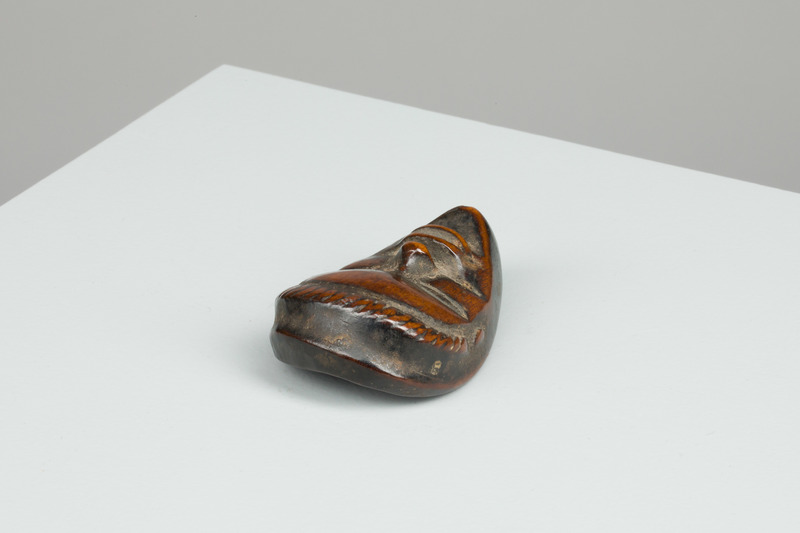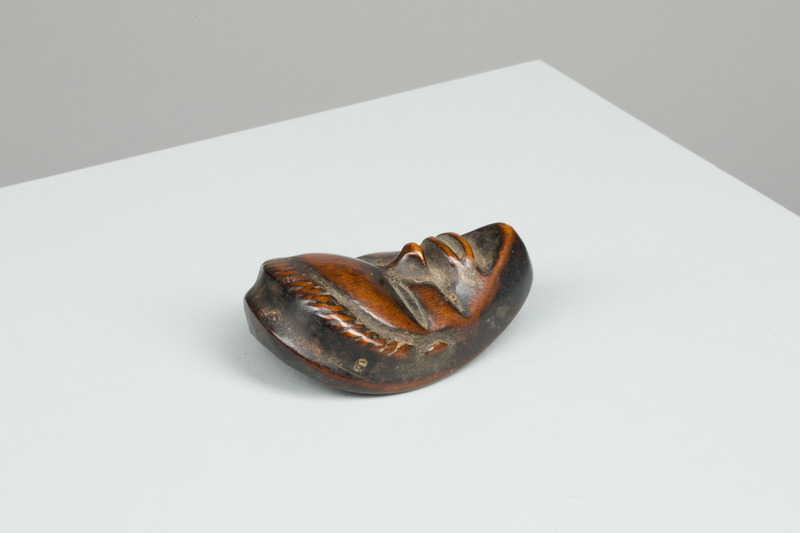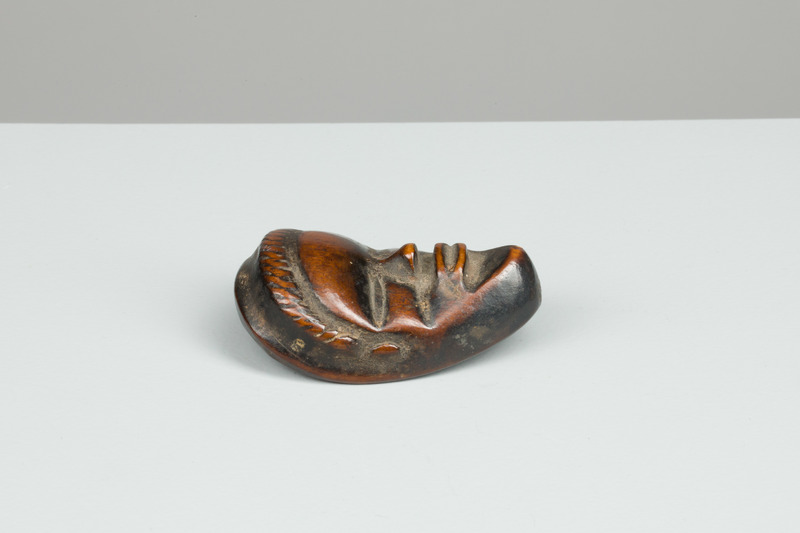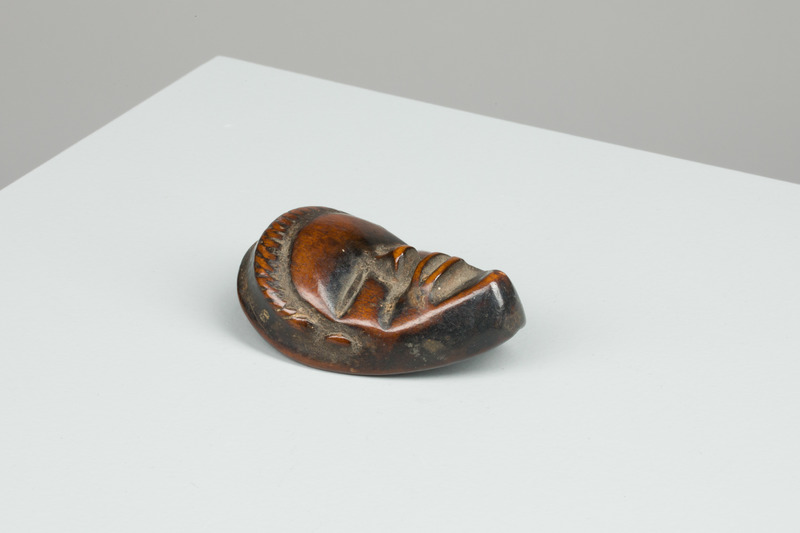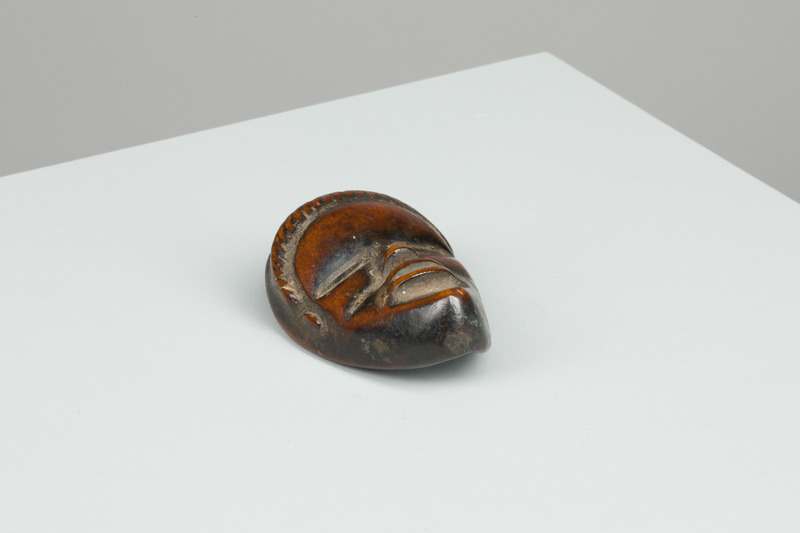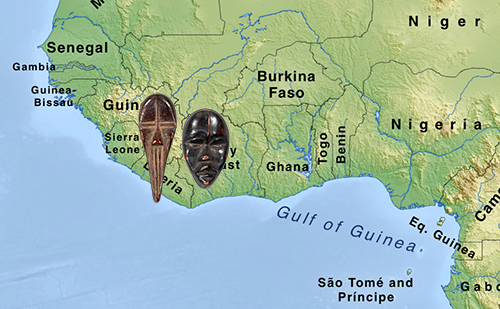Catalogue 2
Bird Mask, geaya gle
Dan people, Liberia
20th century
Wood; 4 1/2 x 1 1/2 x 1/2 inches (11.4 x 3.8 x 1.3 cm)
Collection of Allen and Barbara Davis
Bird Mask, geaya gle
Dan people, Liberia
20th century
Wood; 4 3/8 x 2 x 1 1/8 inches (11.1 x 5.1 x 2.9 cm)
Collection of Allen and Barbara Davis
Female Circumcision Mask, dean gle
Dan people, Liberia
20th century
Wood; 3 x 1 3/4 x 3/4 inches (7.6 x 4.4 x 1.9 cm)
Collection of Allen and Barbara Davis
Female Entertainment Mask, tanka gle
Dan people, Liberia
20th century
Wood; 2 3/4 x 1 3/4 x 3/4 inches (7 x 4.4 x 1.9 cm)
Collection of Allen and Barbara Davis
All Dan masks, except the chimpanzee mask (kao gle), can be executed in miniature form. The four masks displayed here include two spirits (gle, plural glenu) in the form of birds with beaks (geaya gle), a spirit representing a female that is employed in boys’ circumcision ceremonies (dean gle), and a female entertainment mask (tanka gle). These miniatures are known by several names, but the most common is ma go, small head.
Any man who is an owner of a mask (a mask zo), or any man or woman whose family owns an important mask, is entitled to commission a miniature. These small masks serve a variety of functions. They allow a person who has traveled away from the family compound to retain his or her association with a powerful mask-spirit even if the original is not present. Sacrifices may be offered to these miniatures to request the aid of the benevolent spirit.
While women are prohibited from owning full-scale masks, they may have miniature masks in their possession. A daughter may commission a miniature of her family’s mask at the time of her marriage so that she will be able to retain a relationship with this mask once she moves to her husband’s home. The miniature is consecrated by being laid next to the full-scale mask for a night. A sacrifice is offered, and the woman takes possession of the miniature. She keeps it in a special finely plaited basket or other container with her other precious possessions, and no man, not even her husband or the male head of his lineage, may look inside it.
These miniature masks also play an important role in men’s secret society rites. They number among the group of sacred objects that initiates are shown and that are displayed at society meetings. They are generally interpreted by the members to be representations of the benevolent spirits associated with the most important masquerades in the area. During initiations miniature masks may be placed on the path to guide novices to the assembly. As the initiate encounters one of these miniatures, he must pay a sum of money to continue along the path. At the circumcision camp, miniature masks play a role as witnesses to the operation and serve to protect the boys from any malevolent forces.
Because these miniatures evoke the spirit associated with the particular masquerades, they are powerful objects, and people carry or wear them as protective amulets. For the owner of a masquerade they also serve as an important means of identifying himself as a zo to other masquerade owners, especially when traveling outside his immediate home area.
Allen Davis acquired a number of these miniature masks from the collection of George Harley, who was then living in Virginia.
MJA
References
Adams, Monni. 1995. “Group of Small Masks; Dan (Yacuba, Gio, Geh), Liberia, Ivory Coast; Wenion (Wè, Guéré); Mano, Liberia, Ivory Coast” In Africa: The Art of a Continent, edited by Tom Phillips, 460–64. New York: Prestel.
Fischer, Eberhard, and Hans Himmelheber. 1984. The Arts of the Dan in West Africa. Zurich: Museum Rietberg.
Harley, George W. 1950. Masks as Agents of Social Control in Northeast Liberia. Papers of the Peabody Museum of American Archaeology and Ethnology, Harvard University, 32.2. Cambridge, MA: Peabody Museum of American Archaeology and Ethnology.
Schwab, George. 1947. Tribes of the Liberian Hinterland. Edited with additional material by George W. Harley. Papers of the Peabody Museum of American Archaeology and Ethnology, Harvard University, 31. Cambridge, MA: Peabody Museum of American Archaeology and Ethnology.
Siegmann, William, with Cynthia E. Schmidt. 1977. Rock of the Ancestors / Namôa k ni: Liberian art and Material Culture from the Collections of the Africana Museum, Cuttington University College, Suakoko, Liberia. Suacoco, Liberia: Cuttington University College.



